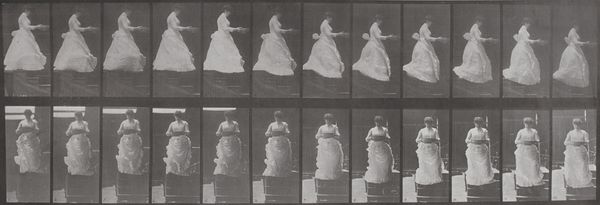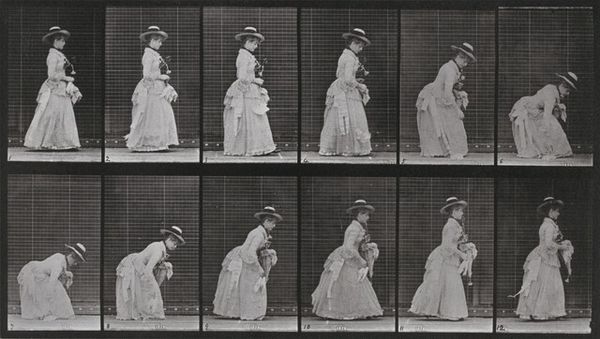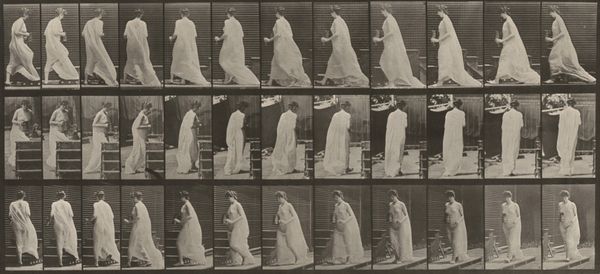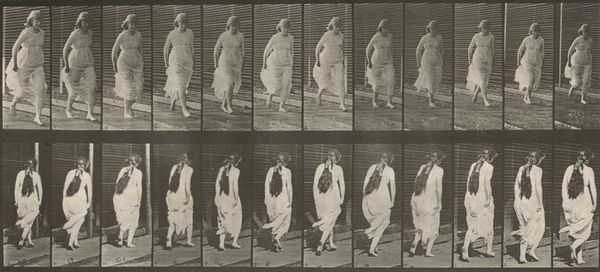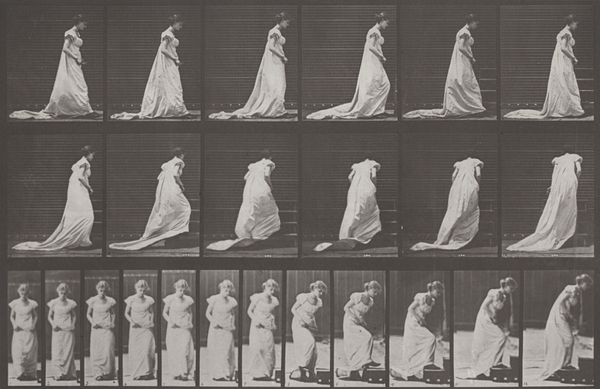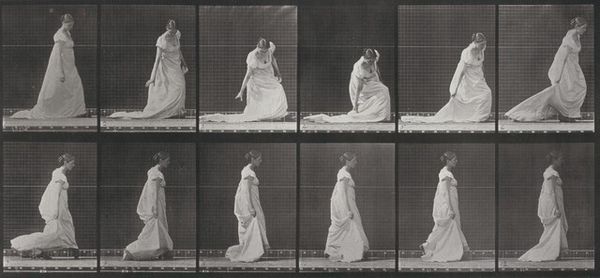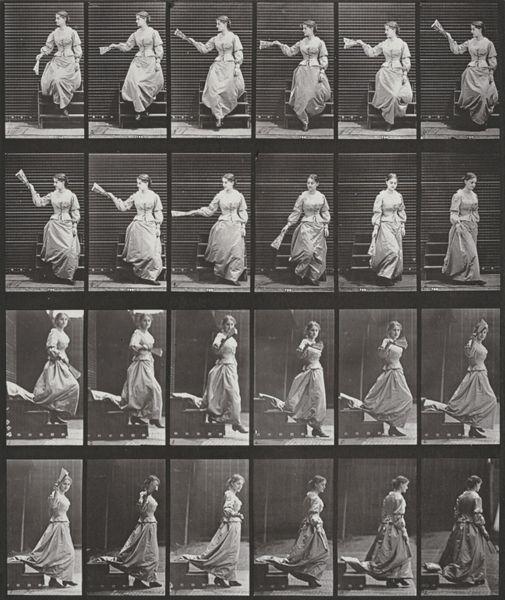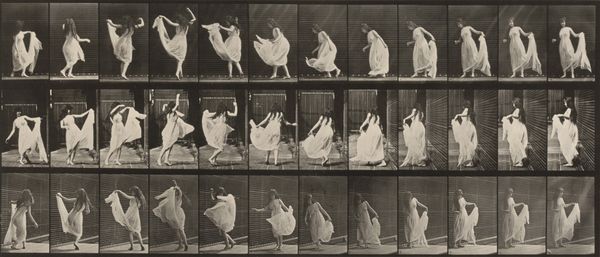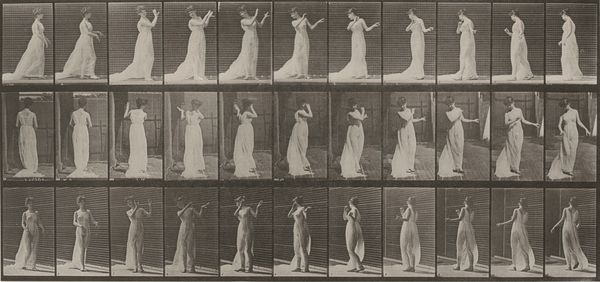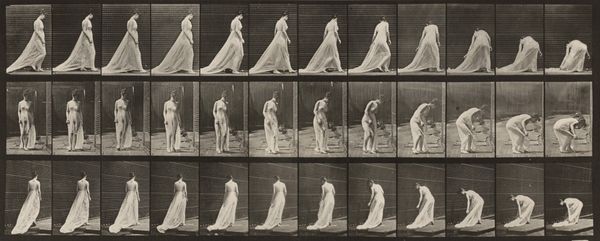
Plate Number 142. Descending stairs and turning, dress caught 1887
0:00
0:00
print, photography
#
portrait
# print
#
photography
Dimensions: image: 17.3 × 40 cm (6 13/16 × 15 3/4 in.) sheet: 47.35 × 60.2 cm (18 5/8 × 23 11/16 in.)
Copyright: National Gallery of Art: CC0 1.0
Curator: We’re looking at Eadweard Muybridge's "Plate Number 142. Descending stairs and turning, dress caught," from 1887. It's a photographic print, part of his series documenting animal locomotion. Editor: Immediately, the grid-like composition jumps out. It reminds me of early film strips, each frame meticulously capturing a slice of time. The grayscale palette adds to its stark, scientific feel. Curator: Precisely! Muybridge's work was revolutionary, informing not only art but also science. Consider the gender dynamics at play here, though. A woman, performing everyday actions, becoming the object of intense, almost clinical observation. Who was she, what was her experience of being broken down into a series of images? Editor: I see your point, but the objective clarity also draws attention to the sheer mechanics of movement. The way her skirt swirls, the shifting balance of her body. Look at how he captures the changing angles of her dress as she turns. It is a dynamic arrangement of contrasting lines. Curator: That ‘dress caught’ seems like a critical, deliberate aspect. How women are always being subtly restrained in that time. Do you also feel a commentary about performance, the constricting expectations of femininity in the late 19th century? The photographs turn her into an object of study, reducing her movements to a series of scientific data points. Editor: True, but consider the beauty within the frame. Notice how each position creates a unique composition, a play of light and shadow on the fabric? It’s the visual rhythm, the systematic breakdown, that speaks volumes, stripping it of any singular, conclusive reading of meaning. Curator: So, you are less willing to see how these technologies historically participated in, let’s say, visualizing the spectacle of gender roles and instead more interested in the aesthetic properties of the serial process and what it reveals through semiotics? Editor: In a nutshell! Both interpretations, while seemingly opposite, bring so much depth to Muybridge’s work. Curator: Well said, the dialogue between art history and close visual analysis enriches our experience of this piece and is hopefully part of what people take with them today.
Comments
No comments
Be the first to comment and join the conversation on the ultimate creative platform.

